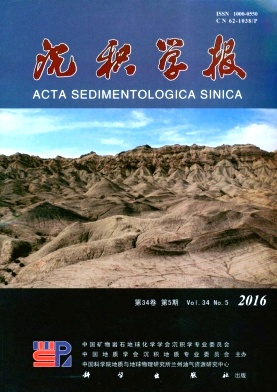Sedimentary Characteristics and Reservoir Significance of Microbial Carbonate in Ma51+2 Member of Ordovician in Northestern Ordos Basin
doi: 10.14027/j.cnki.cjxb.2016.05.015
- Received Date: 2015-11-05
- Rev Recd Date: 2016-01-22
- Publish Date: 2016-10-10
-
Key words:
- microbial carbonate /
- cyanobacteria /
- microbial mound /
- Ma51+2 /
- Ordovician /
- northestern Ordos Basin
Abstract: Based on core, thin section and physical properties, the sedimentary characteristics and reservoir significance of microbial carbonate in Ma51+2 member of Ordovician in northestern Ordos Basin were studied. Different scale of microbial carbonates constructions formed by cyanobacteria community were found in the study area. Algal flat and microbial mound are found in Ma51+2 member, formed by stromatolite, cyanobacteria laminar dolomitite, cyanobacteria thrombolite and some grainstone connected with microbes. The microbial mound develops on a small scale in vertical, mostly less than 1 m thick per cycle. And, the microbial mound has a depositional model of mound base-core-flat in vertical which reflects a drop in sea level, formed by piebald clastic dolomite, cyanobacteria thrombolite, algal bound sand-clastic dolomitite and cyanobacteria laminar dolomitite. Besides, it also develops into the mound-shoal complex together with grain beach. Fenestral pores and intergranular dissolved pores were found in cyanobacteria thrombolite and algal bound sand-clastic dolomitite which shows the characteristics of medium porosity and low permeability totally. It can be one of the reservoir rocks in northestern Ordos Basin.
| Citation: | XIONG Ying, YAO JingLi, LI Ling, HOU YunDong, XIAO Di, NIE WanCai, ZHAO DongFang, TAN XiuCheng. Sedimentary Characteristics and Reservoir Significance of Microbial Carbonate in Ma51+2 Member of Ordovician in Northestern Ordos Basin[J]. Acta Sedimentologica Sinica, 2016, 34(5): 963-972. doi: 10.14027/j.cnki.cjxb.2016.05.015 |






 DownLoad:
DownLoad: